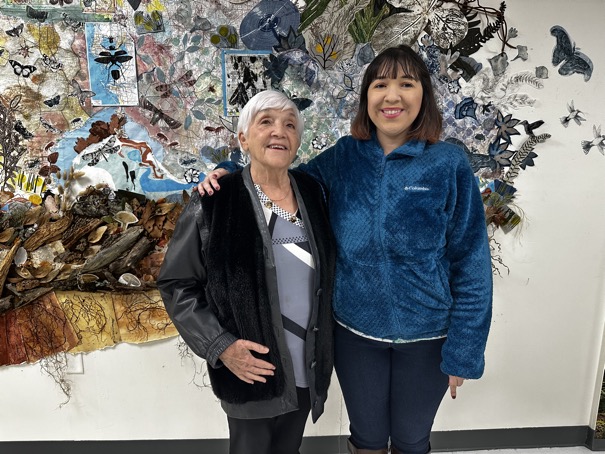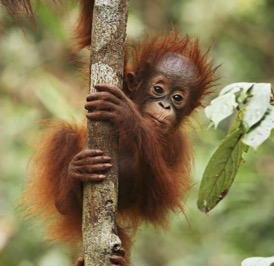Weaving Joy into Climate and Dark fiction.
In climate fiction or any genres that explores darker themes, how can writers weave a compelling story without sugar coating the truth? Here are some powerful techniques:
Humor: Sprinkle humorous moments into the story. Carl Hiaasen inserts humor into troubling situations. For example:
The first rule of hurricane coverage is that every broadcast must begin with palm trees bending in the wind.”
― Carl Hiaasen
“Mickey Cray had been out of work ever since a dead iguana fell from a palm tree and hit him on the head.”
― Carl Hiaasen, Chomp
In climate fiction or other genres, how can writers weave a compelling story about climate change without sugar coating the truth? Here are some techniques:
The setting: The setting can be local or across the global. Describe the setting that pulls readers into the character’s’’ world. For example: “The town of Nahoon, on Chichagof Island, 30 miles from Juneau, Alaska: It is late spring on Chichagof Island, and the air and water are warming. The bears have woken from their long sleep. All eye are on the horizon for the oceans grateful giants, the gray whales.” The Gray Whale’s Lament by Claire Datnow

.
In a review by Maragaret Amsler she highlights the setting of The Gray Whale’s Lament:
“First the reader travels to Sumatra, Indonesia and meets talented Aishya who has a special bond with a rescued orangutan Next Datnow takes the reader to western Australia where marathon runner Kirri has a similar special bond with a wallaby. The third vignette focuses on Californian Hector and an injured Swainson’s hawk he is dedicated to rehabilitating. These diverse teens share not only an uncommon Dr. Doolittle-like relationship with their rescued wild animal, but each teen also becomes trapped in a devastating wildfire. The hero in the vignettes are the orangutan, wallaby and the hawk – each leading the grievously injured teen to safety.
Joy: Introduce joyful moments, despite dire situations looming over the protagonist.
“Red Flag Warning: An Eco Adventure,” the first book in my Climate Fiction trilogy, a reviewer wrote, “With inspiring breadth and creativity the author explores pressing environmental issues . . . but doesn’t leave out moments of joy and delight. — Professor Sue Brannon Walker, selected to Alabama Writers Hall of Fame Class of 2025.

In “What If We Get It Right?: Visions of Climate Futures,” Dr. Ayana Elizabeth Johnson puts forward other ways to weave joy into your narratives, which she illustrates with the overlapping circles of a Venn Diagram:
1) What are your characters good at/special gift?
2) what work needs to be done?
3) And what brings your characters joy?
Special Gifts: In the “The Gray Whale’s Lament,” Book two of the trilogy, three teenagers use their powerful gift—the ability to communicate with animals—to save them. In turn, their animals save them from certain death during a race to outrun the flames roaring toward them. Aisyah, a compassionate free spirit from Sumatra, bonds with Pongo an endangered orangutan. Kirri a competitive marathon runner from Australia, bonds with Rocky an endangered Rock wallaby. And then there’s Hector, a headstrong and gifted falconer from California, who bonds with Swain, a magnificent Swainson’s hawk. After their painful recovery from burns, the teens in return take on a new challenge, caring for animals injured in the fires (what they are good at and what brings them joy).
Despite dark themes, these techniques will lift your storie’s mood and inspire hope that positive action is possible.
The Craft of Writing About Animals

Poster Design by Sonia Datrnow
I’ve been writing #eco fiction and #climate fiction with #endangered #wildlife for more than twenty years. Here are a few of the animal characters in the Adventures of The Sizzling Six series, and the Four Elements #Cli-fi Trilogy.
The list of birds includes White Storks, Chimney Swifts, Red Knots, Red-cockaded Woodpeckers, Piping Plovers, Broad winged Hawks, and Peregrine falcons. And animals including: Sumatran Orangutans, black-footed wallabies, koalas, diamondback terrapins, monarch butterflies, and marine species including gray whales. Plants also feature in my eco fiction and climate fiction, including the rare Cahaba Lily, magnificent White oaks, Longleaf pines of our southeastern forest, and the tropical fruit trees of Sumatra.
Why do I write about animals in my #eco and #climate fiction adventures?
Stories foster empathy for the wild animals with which we share our world.
To quote the late Steve Irwin, “We don’t own planet Earth, we belong to it. And we must share it with our wildlife.”
Why must care about protecting animals on our planet? Because it’s made up of diverse plants and animals that depend on the land, water, and the atmosphere to survive—as we humans do. If human-driven climate change harms these ecosystems then all life on earth will suffer.
Why do I write stories with potential dire consequences to animals? Why write about climate driven hurricanes, heatwaves, wildfires, floods and droughts? While my stories do not sugarcoat the truth, hopefully, they will inspire #tweens, teens, #middle graders, our next generation of voters and leaders to become #activists who make intelligent decisions and become wise steward of the Earth.
“It’s not enough to love animals; we must actively protect and preserve them. It’s our duty and responsibility as custodians of this planet.”— Daphne Sheldrick, author and conservationist who raised orphaned elephants to return to the wilds.
Read Part 11 Next: Guide to Writing About Animals in Fiction
Resources:Don’t Kill the Cat! And Other Secrets to Writing about Animals: https://careerauthors.com/dont-kill-the-cat-and-other-secrets-to-writing-about-animals/
Writing for Animals. Ashland Creek Press: https://ashlandcreekpress.com/books/writingforanimals.html
The Forgiveness of Whales

It is my honor to introduce T.K. Thorne as my guest blogger. She wrote this fascinating piece about whales, which immediately caught my attention. T.K’s blog resonates with me as I have recently published The Gray Whales Lament: An Eco Adventure (Book 2 of The Four Elements Cli-Fi Trilogy).
Retiring as a police captain in Birmingham, Al., T.K. Thorne turned to crime with a trilogy of murder, magic, and mayhem in the “Magic City Stories” (House of Rose, House of Stone, and House of Iron) where a rookie policewoman discovers she is a witch. A deep dive into the past produced award-winning historical novels about famous, unnamed women briefly mentioned in the Bible (Noah’s Wife and Angels at the Gate) and two nonfiction works of civil rights (Last Chance for Justice and Behind the Magic Curtain: Secrets, Spies, and Unsung White Allies of Birmingham’s Civil Rights Days). TKThorne.com
Until recently, scientists thought humans were the only species with the specialty brain neurons responsible for higher cognitive functions like self-awareness, a sense of compassion, and language.
They were wrong.
Fifteen million years before humans, whales began evolving these special glial cells, and now a strange phenomenon is occurring off the Baja coast of Mexico.
Humans have been slaughtering Pacific whales there for a long time, first with harpoons, now with sonar from Navy ships. Whales live a long time, up to a hundred years. Some whales alive today still bear the scars of harpoons. Many scientists believe that it is implausible to think the whales do not remember this or associate humans with death and anguish.
Yet, in the same area where humans hunted them nearly to extinction, then tortured them with sonar, whales are approaching humans and initiating contact. A N.Y. Times article detailed the experiences of the reporter and the stories of locals who tell about mother whales approaching their boats, sometimes swimming under it and lifting it, then setting it gently down. Almost all the stories involve the whale surfacing, rolling onto its side to watch the humans–reminiscent of the surreal moment in the movie, Cast Away, when a whale rises from the night sea to regard Tom Hanks with an eye cupped with starlight, an eerie intelligence, and a gentleness that moves us, for we know the massive creature could kill the castaway with a nudge or a flick of a tail fluke.
These real grey whales off Baja swim close enough that people invariably reach out to touch them, and they allow it. One person, reflecting on the experience said, “I have never felt more beheld.” It seems reasonable—given the position the whales place themselves in—that they seek the contact. In many cases, a mother whale will allow her calf to do the same. There is no food involved in these exchanges, only a brief interlude of inter-species contact and rudimentary communication: I come as friend.
Why?
Where will humans be in another hundred years? I suspect we will be technologically advanced, but emotionally pretty much the same, even in a thousand years or ten thousand.
But what about a million years? Ten million? Can we evolve (if we survive) to a more sane, more rational, more loving species with a broader sense of our place in the universe and in life itself? Is it possible that these creatures with 15 million years of intelligent evolution on us, might regard us as a young species, children who don’t really know better, and grant us leeway for our mistakes? Grant us . . . forgiveness?
We have a need for that forgiveness, not only from our treatment of whales, but of each other. We have enslaved, tortured, raped, and slaughtered each other. We have recklessly used the resources of our planet.
Yet I read about humans risking their lives to free whales trapped in nets.
People offering aid to neighbors. . . to strangers.
Teachers, nurses, and soldiers whose daily life is one of giving.
We have much need for forgiveness, yes, but we are capable of great acts of cooperation, of kindness, love, and sacrifice. Perhaps that is what the whales see in us when they watch us use our clever hands to free them from heavy rope nets, nets that we have left carelessly in their domain, as children leave their toys strewn across the floor.
Even whales have enemies, and they do not hesitate to defend themselves when attacked and even take the battle to the enemy. Humpbacks have been observed defending not only their own against attacks of orcas, but other mammals, other whales, sea lions, fur seals or walruses. Interestingly, they only attack mammal-eating killer whales, not orcas that primarily feed on fish.
Perhaps they understand that—like the orcas—all humans are not the same.
Perhaps they are waiting for us to become our best selves, believing, or hoping we will evolve into worthy fellow creatures on this blue-and-cream jewel that is our world.
T.K. Thorne writes about what moves her, following a flight path of curiosity, reflection, and imagination.
Climate Fiction Adventures

(Claire and granddaughter Sonia at the Paperworks Local Exhibit)
As a writer and reader, what inspires you? What drives your curiosity? What questions are you seeking answers for? What are your passions? What do you hope readers will remember as they close the last pages of your book?
While working on Book 3 of The Four Elements Cli-Fi Trilogy, I visited the exhibit at Paperworks Local: Extinction and Resilience, which “delves into the astonishing adaptability of Nature amidst the relentless shifts in our environment, driven by both natural forces and human actions. It casts a spotlight on the myriad life forms at the brink of extinction and also celebrates the unyielding resilience of nature and humanity alike.” The artists who created this exhibit were captivated by the natural world. This parallels exactly the underlying theme of my climate fiction!
What inspires me, no drives me, to write cli-fi—a genre you may not have heard of? That’s right, not sci-fi but cli-fi, which investigates the consequences of climate change, and imagines a hopeful future. It is a daunting topic.
My burning question—pun intended—as an environmental writer has morphed into: How can I, as a fiction writer, inspire the next generation of young people to understand what is happening to our planet, and motivate them become wise stewards of planet Earth? After all, they will soon be voters.

In Book 3 of the trilogy, I plan to explore the ways in which animals and plants are already adapting to climate change, and the way in which humans are adapting, too. To prepare for the book I’ve been reading: Hurricanes Lizards and Plastic Squids, by Thor Hanson, and Braiding Sweet Grass by Robin Wall Kimmerer.
I would love to hear about what inspires you to write your own stories? Contact me at: cldatnow@me.com
The Gray Whale Eco Fiction
“Endangered species are reminders that we are interconnected, that animals across the globe are vital threads in the tapestry of life.” World Wildlife Fund
Through stories about #endangered animals set in a changing #climate, my #eco fiction features courageous tweens and teens determined to take action to save the animals they love. Although I do not sugarcoat the truth, my stories are hopeful. They show that #endangered species can recover thanks to the efforts of dedicated conservationists, scientists, and policymakers.
 Read More…
Read More…Respect The Wildness of Animals

The second edition of Red Flag Warning: An Eco Adventure had just been published! The story follows the adventures of three special young people from across the world, the wild animals that are part of their lives, and the terrible threats they face—threats that will affect them and the entire world. The teens, all scared by wildfires, struggle with deeper wounds to their self- image. They must learn to respect the wildness of the animals they love and find their own voices, along with the power of community, in their mission to protect the animals they love
In what way does the book inspire compassion and respect for animals in the readers? Three teens Aisyah from Sumatra, Hector from California, and Kirri from Australia, dedicate themselves to the challenging task of rehabilitating a Sumatran orangutang, a Rock wallaby, and a Peregrine falcon–all severely injured in wildfires. To accomplish this mission to return them to the wild, they must acquire knowledge, respect, patience, and empathy for the animals with whom they have bonded.

What inspired you to write about animals? Red Flag Warning opens a gateway for young people to feel empathy toward animals in the wild, empowering them to take action to help animals thrive and survive, and ultimately to preserve the biodiversity of life.

Does the story weave in other themes? Absolutely. The wildfires are fueled by climate change resulting in the destruction of the natural habitat necessary for the survival of the species.
More Blogs
The Last Whaling Station

A Visit to the Setting of the Story
Reality met the setting I imagined on my trip to the Last Whaling in the US, San Pueblo Point, East Bay California. This is an excerpt from The Gray Whale's Lament after my trip.
Chapter 8. The Last Whaling Station
They drove on the freeway through heavy traffic and then across the long, roller coaster-like San Rafael Bridge. Nearing their destination at Point Molate Naval Base, they passed an old air raid shelter with castle-like brown brick walls covered in vines.
Searching the internet Sarah exclaimed, “Mom, this is so interesting . . . did you know that Native Americans fished right here for centuries, and that in the late 1800s it was a Chinese shrimp camp?” Read More…
The Winds of Change are Calling

In a world where the gale force winds of change are driving hurricanes, tornadoes, droughts, floods and forests fires, I ask myself: what can I do to make a difference no matter how small? As a writer, I have chosen to dedicate myself to weaving stories that will, hopefully, inspire the children of tomorrow to shape a brighter future. After decades of misinformation, denial, and inadequate attempts to reduce the dire impact of environmental destruction, young people around the world are troubled, angry, and frustrated. They are searching for ways to understand and to take action. The epiphany that inspired me to begin writing Eco-mysteries struck me one morning driving to work down the road winding through a wooded hillside. As I approached the bottom of the hill, I yelled out loud, “How dare they!” Overnight, a swath of naked red dirt had replaced a verdant forest. A forest of oak, hickory, poplar, and pine, which had sheltered
Read More…